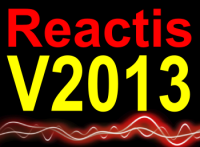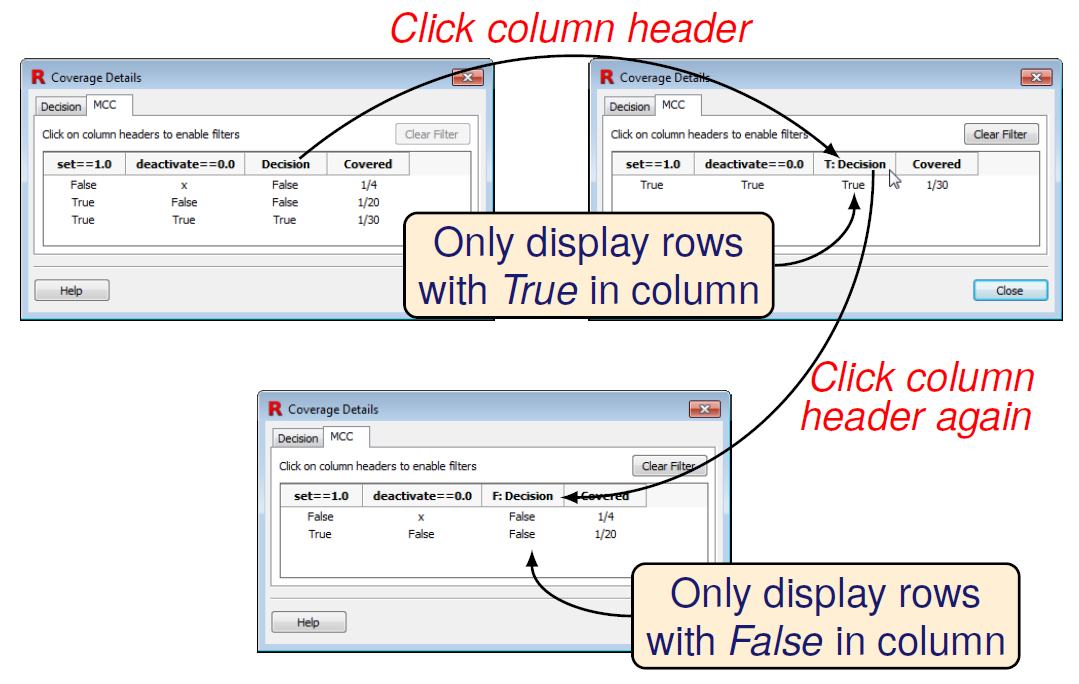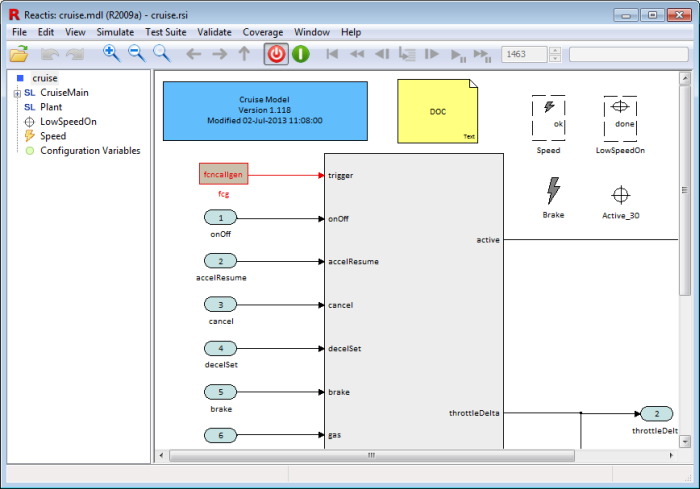Reactis V2013 Released
 Cary, NC (August 14, 2013) -- Reactis V2013 is now available,
offering updates to Reactis, Reactis for C Plugin, and Reactis Model
Inspector. The release includes support for MATLAB® R2013a, support
for the new .slx model file format, a new coverage metric Multiple
Condition Coverage (MCC), several GUI enhancements, test-generation optimizations,
export of coverage reports from the API, and bug fixes.
Cary, NC (August 14, 2013) -- Reactis V2013 is now available,
offering updates to Reactis, Reactis for C Plugin, and Reactis Model
Inspector. The release includes support for MATLAB® R2013a, support
for the new .slx model file format, a new coverage metric Multiple
Condition Coverage (MCC), several GUI enhancements, test-generation optimizations,
export of coverage reports from the API, and bug fixes.
The new MCC metric offers an even more comprehensive level of testing than is afforded by the previously supported MC/DC. Note that MCC requires that for every decision, all combinations of condition outcomes must be observed. For example, consider the decision with three conditions: A && B && C. The MCC targets for this decision are enumerated in the tables below. Each row represents an MCC target: the final column stores the decision outcome while all other columns store a condition outcome. A T indicates the condition evaluated to true whereas an F represents false. The left table shows the case when short-circuiting is not used, while the right table shows the targets when short-circuiting is used (in which case an x in the table indicates the condition was not evaluated).
|
|
|||||||||||||||||||||||||||||||||||||||||||||||||||||||||||||||||
The tables highlight that many MCC targets exist when short-circuiting is not used. To be precise there are 2n targets when a decision contains n conditions. Note, however, that in the case when short-circuiting is used many fewer targets exist. In this case the number is four, which is the same number of MC/DC targets for this decision.
As is the case for all metrics supported by Reactis, Reactis Tester
attempts to exercise as many MCC targets as possible and Reactis Simulator
offers many ways to track MCC coverage. A simple yet powerful filtering
mechanism, lets you instruct Reactis to display all MCC targets meeting a
given criterion. For example, you can specify: display all covered MCC
targets where A is true and C is false. Even if MCC tracking itself
is not of interest to you, this capability to easily explore the coverage
of MCC targets is helpful when aiming to achieve high levels of MC/DC
coverage. The filtering mechanism is toggled by clicking on column
headers as shown below.

Optimizations in Reactis Tester both improve coverage (especially for models containing lookup tables) and reduce the total number of steps in generated test suites. Note that due to the nature of the optimizations, not all models will see improvements.
V2013 also includes a number of GUI enhancements that affect both
Reactis and Reactis Model Inspector. Simulink block coloring is now
displayed as shown below. Note, that in Reactis the coloring is only shown
when Reactis Simulator is disabled. This is to avoid interference with the
coloring Simulator uses to convey coverage information. In the new
release, the contents of Model Info and Doc blocks may also now be viewed.
Finally, when performing a text search of a model, Reactis now also
inspects the contents of Simulink annotations.

Reactis Simulator offers a new feature to simplify the diagnosis of assertion violations. The feature works as follows. If a violation occurs when running a test suite in Simulator (indicated by the assertion being highlighted in red and yellow), then you can right-click on the violated assertion and select Run to Violation. This will cause Reactis to switch to the test in which the violation occurs and run to the step where it occurs.
More information on V2013:
- Presentation slides giving a visual overview of the new V2013 features
- V2013 release notes
- Download Reactis V2013
About Reactis. Reactis provides automated test-generation and model-validation capabilities for Simulink/Stateflow models of control software. The tool can be used to test for conformance between a model and implementation code, and it can also be employed to validate model behavior. Reactis is used at dozens of companies worldwide in the automotive, aerospace, and heavy equipment industries.
About Reactive Systems. Reactive Systems, founded in 1999, is a privately held company with offices in Cary, NC and Nagoya, Japan. The company offers tools and services to help improve software quality while reducing development costs. For more information visit www.reactive-systems.com or call +1-919-324-3507.